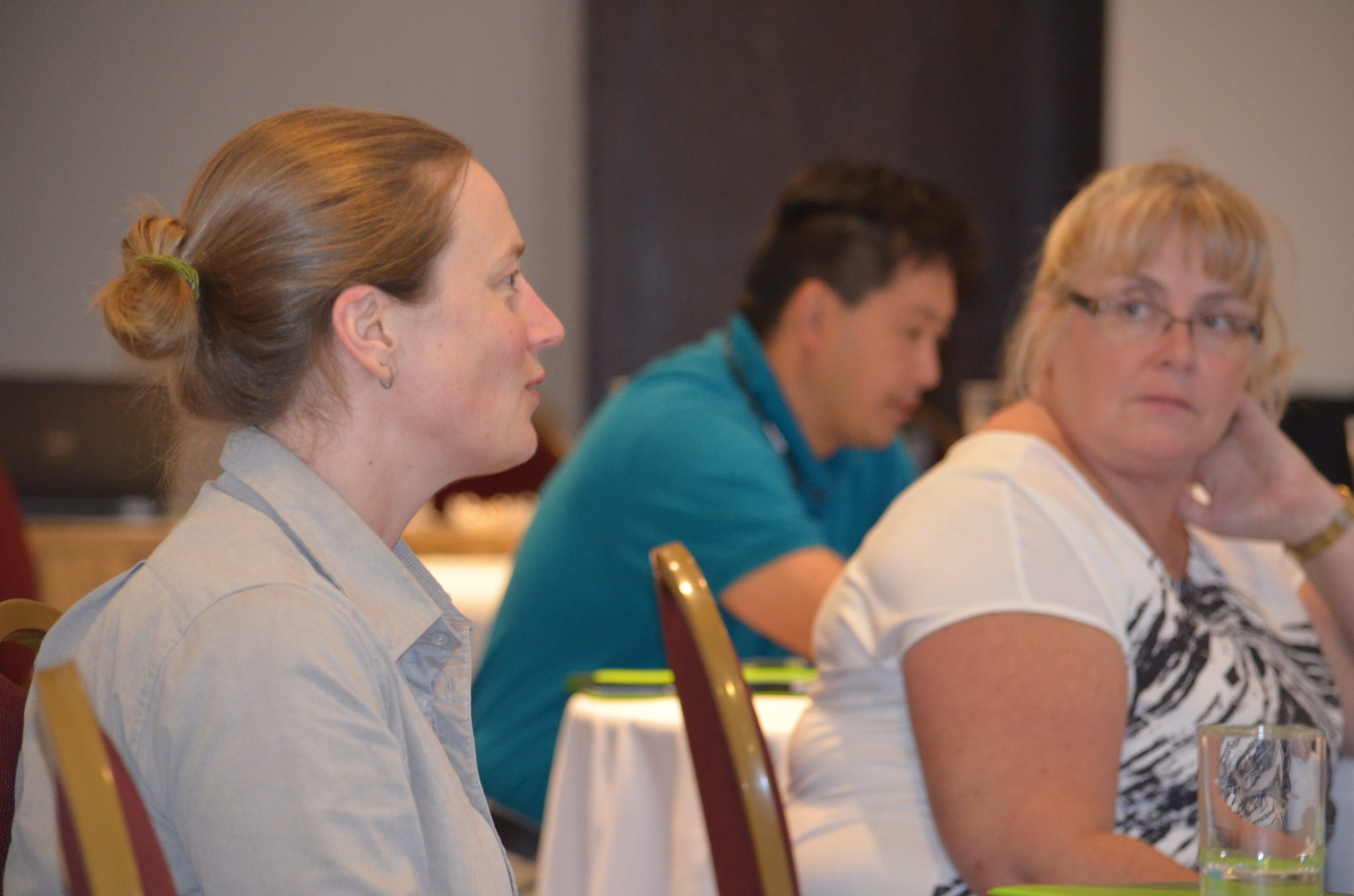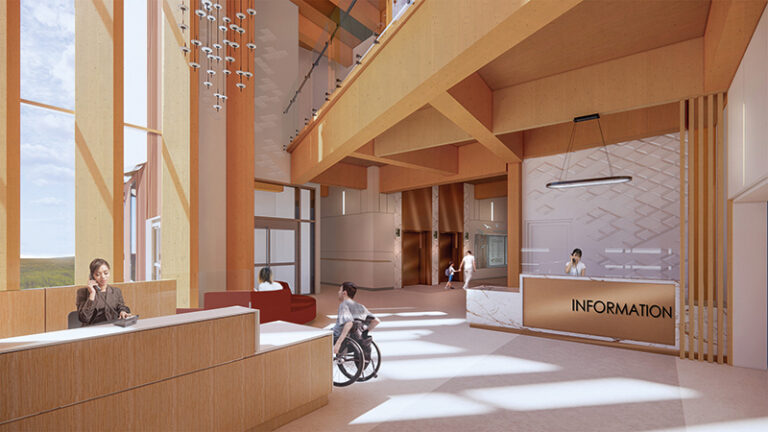What happens when you bring 12 municipalities of varying sizes and experience together, in one room, to work towards the common goal of integrating sustainability into asset management? You form a diverse conversation that builds a collaborative approach for solutions for communities across Canada.
That has been the drive behind the Federation of Canadian Municipalities’ Leadership in Asset Management Program (LAMP); to bring municipalities together to build a framework that ensures that municipalities make the best long-term social, economic, and environmental decisions on infrastructure.
On December 15, 2015, the Government of Canada and the Federation of Canadian Municipalities announced the 12 communities that would be taking part in the inaugural English cohort of LAMP. With $1,028,835 in dedicated funding through FCM’s Green Municipal Fund, these communities were given the opportunity to strengthen their asset management programs thanks to this new collaborative approach
The funding provided focused on four priority areas:
- Phase 1 (required): Asset management policy, strategy, and governance;
- Phase 2 (optional): Levels of service; Risk assessment, or Lifecycle management
Municipalities interested in taking part in the program had to be prepared to meet specific criteria. They had to demonstrate that they possessed the management and financial capacity to undertake Phase 1 of the project. The municipal council had to approve a resolution to undertake the activities outlined in the program. A cross-departmental team had to come together to take part, which had to include, at minimum, a capital planner, a strategic corporate or land use planner or administrator, and a finance director or equivalent. Lastly, the municipality had to prove a demonstrated commitment to implementing sustainability as part of the community plan.
Breaking new ground
Bringing this new team together to tackle the needs of sustainable asset management is a vital component to this new collaborative approach.
LAMP welcomes municipal staff to the asset management table not traditionally involved in putting the plan in place. Senior finance and planning staff help bring the sustainability component to the at the forefront of the asset management cycle, where it must be for effective implementation in communities.
“So much of sustainability is built into design,” said Angela Danyluk, sustainability specialist for the City of Vancouver. “While practitioners in planning and engineering might think about these things, quite often they think about it towards the end of the process, after procurement, after a plan, after a public benefit strategy has been made. By embedding sustainability in asset management at the foundation, our local governments create, maintain, and make decisions about assets that have huge service and financial implications on our community.”
For some of the larger centres involved with LAMP, this marks the first time that sustainability staff have been included in the asset management conversation. With planning, finance, and sustainability collaborating in the strategic, governance components of the AM process, there is greater ability to make the best long-term decision for the community.
Getting started
The program is broken down into two phases. Phase 1, which all 12 municipalities are participating in, focuses on the first priority, collaborating to establish a working asset management policy, strategy, and framework. Phase 2, which eight of the 12 municipalities are involved with, looks at the other three priority areas, working to determine levels of service, assess risk, and manage the lifecycle of municipal assets.
Of the municipalities involved, some brought extensive prior involvement in asset management to the table. Cities like Edmonton, Vancouver, Ottawa, and Windsor already had established asset management programs in place. Smaller communities, like County of Kings, Langley and others, are at or near the start of their asset management journey.
After an open application process, the municipalities chose a proposal put forward by CH2M Hill Canada Ltd. and Opus International Ltd. to lead the collective discussions. The two companies have extensive experience in working with Canadian communities on the creation of asset management plans, and came together to provide a team of experts to provide the technical support needed to research and share good practices and help generate new knowledge with the cohort between the municipalities participating in the program.
Building the teams
Part of building LAMP was to build a network of peers to support each other in their roles in asset management in their municipalities, recognizing that culture change in municipalities is one of the biggest barriers to adopting a strategic approach to asset management. Navigating change processes can be complex and one of the best ways to facilitate it is by enabling peers to connect with each other to discuss challenges and exchange ideas. The project leads from the municipalities meet regularly as a cohort, and all participants have also been divided into smaller groups that collaborate on specific aspects of the project. Ideally, everyone involved will be able to collaborate well beyond their official time together in the program.
As their collective knowledge and experiences grow, they will become mentors for other community leaders as they pursue implementing their own sustainability initiatives.
The ultimate goal for the municipalities is to build policies, strategies, governance structures and frameworks for asset management that fully integrate sustainability based on the triple bottom line approach. According to Kim Fowler, the main sustainability consultant on the ch2m/opus team, the traditionally-defined triple bottom line approach of social, economic and environmental also has two variations, as some communities prefer the first to be stated as socio-cultural, whereas others prefer social and cultural to be separated, creating a four screen approach rather than the traditional three screen approach. But it is those social, economic and environmental factors, built in throughout the asset management process, that allow for the best long-term solutions to be implemented.
As you can imagine, one of the challenges that has to be overcome in creating these important guiding principles for embedding asset management into corporate and strategic decision-making at the municipal level, is ensuring that the elements are built in such a way that is scalable. A scalable solution provides guidance that can be customized for the unique needs of each individual municipality’s needs.
Overcoming that challenge is why you bring in communities with diverse populations, geographies, economic conditions, and environmental challenges. Through collaboration, facilitated with the expertise that the consulting team brings to the discussion, solutions are presented that reflect the diverse needs of communities at every stage of asset management development.
Next steps
As the teams continue to collaborate online, continuing their discussions on policy, strategy, governance, and framework, four of the communities will soon complete the formal leg of their involvement in LAMP. For the eight others the journey is, in some ways, just beginning.
Phase 2 of the program continues with the analysis of levels of service, risk assessment and lifecycle management frameworks. Each of the eight municipalities is focusing on strengthening one of these important elements of asset management based on their current priorities, working with a consultant they decide can best address their needs.
The knowledge gained from the Phase 2 work further bolsters the program, providing new examples of how to address specific issues in corporate asset management. That information can strengthen overall understanding of the challenges facing municipalities in the creation of asset management programs, and provide invaluable Canadian solutions that can be shared with other communities across the country.
For LAMP participants, the strides they have taken in building sustainability into asset management will make them invaluable mentors for other communities across Canada. They will be able to share their experiences working with the highly-trained consultants supporting their Phase 1 projects, as well as their experiences working with their new national colleagues whom they participated with in the Leadership in Asset Management Program. The knowledge they are generating is also supporting FCM to develop invaluable tools that provide scalable solutions for asset management, solutions that they and FCM can share with other communities across Canada.
With LAMP, new leaders have stepped to the forefront of the asset management community, ones that will help improve long-term social, economic, and environmental decision making for infrastructure assets across Canada.
New FCM programs for asset management and climate innovation
This winter FCM is launching a peer learning initiative, adapted from the Leadership in Asset Management program (LAMP), focused on communities with a foundation in asset management that are also committed to climate action. This initiative will offer grants and training to help Canadian municipalities better integrate climate and sustainability considerations into their asset management approaches.
Through this initiative, municipalities will work regularly with a group of up to 15 municipalities and connect with a broader network of mentor communities that are innovating in asset management to ensure the best possible long-term social, economic, and environmental value for Canadian cities and towns.
This peer learning initiative is part of FCM’s new climate change program, the result of a $75 million federal investment that will deliver climate change mitigation and adaptation programming for municipalities to build more resilient and sustainable communities.
FCM is also offering new opportunities for municipalities that are building their foundations in asset management. Through a $50 million federal investment, FCM will launch its new program to help cities and communities manage their infrastructure development more strategically.
FCM’s new programs will provide grants for studies, plans, demonstration projects, and staff support. Along with these financial supports, the programs will offer capacity-building activities such as peer learning groups, training, workshops, conferences and webinars.
“Sustainability plays an integral role in the development of asset management programs.”
The preceding content was sponsored by the Federation of Canadian Municipalities. The content originally appeared in the January/February 2017 edition of ReNew Canada.
Here are the 12 communities participating in the first cohort of FCM LAMP:
- City of Edmonton, Alta.;
- City of Ottawa; Ont.;
- City of Vancouver, B.C.;
- City of Windsor, Ont.;
- City of Melville, Sask.;
- City of Fredericton, N.B.;
- City of Airdrie, Alta.;
- County of Kings, N.S.;
- City of Nanaimo, B.C.;
- Municipality of North Grenville, Ont.;
- City of Revelstoke, B.C.;
- Township of Langley, B.C.
Defining sustainable development
There are many definitions used for sustainable development across Canadian municipalities and throughout the infrastructure landscape. However, the most common definition is taken from the Brundtland Report, from the United Nations World Commission on Environment and Development (WCED) was published in 1987: “Sustainable development is development that meets the needs of the present without compromising the ability of future generations to meet their own needs.”











